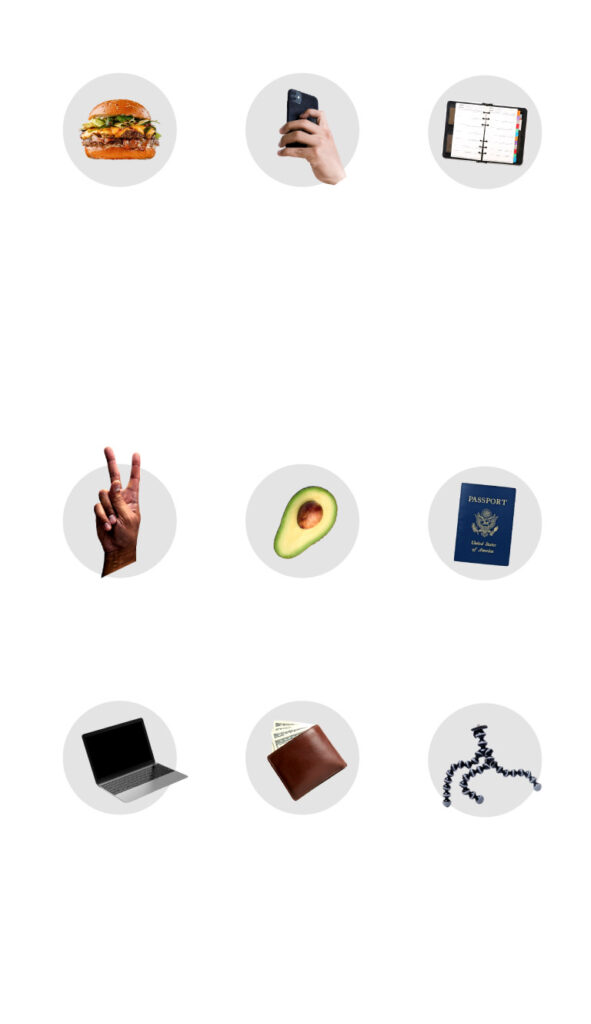In the bustling world of social media, a new industry has emerged – the Creator Economy. With a staggering value of $250 billion, this industry offers a platform for influencers to turn their passions into profitable businesses. However, not all creators are able to turn their hobbies into a full-time career, with only 12% making over $50,000 a year. To shed light on the economics behind running a creative business online, we spoke to ten diverse influencers who shared their monthly finances. From lifestyle creators to food and travel enthusiasts, each influencer has their own unique sources of income, including brand partnerships, ad revenue, merchandise sales, and affiliate links. Join us as we explore the fascinating world of the Creator Economy and how influencers make money in this ever-evolving landscape.

The Creator Economy
Overview of the Creator Economy
The Creator Economy has emerged as a flourishing industry, valued at an impressive $250 billion. It offers a platform for aspiring individuals from all walks of life to showcase their talents, share their passions, and ultimately monetize their content through social media. Whether it’s photography, video editing, art, design, writing, or any other creative pursuit, the Creator Economy has provided a pathway for individuals to turn their passion into a profitable business.
The power of the Creator Economy lies in its ability to connect creators with their audiences directly, bypassing traditional gatekeepers of the entertainment industry. This direct connection enables creators to express their authenticity, build a loyal following, and cultivate a community of like-minded individuals. With the advent of various social media platforms, these creators have access to a wide range of tools and resources to market their content and generate revenue.
Valuation of the Creator Economy
The Creator Economy has witnessed explosive growth, reaching a staggering valuation of $250 billion. This valuation demonstrates the immense potential and profitability of the industry. As more individuals embrace the opportunity to become creators, the value of this economy is expected to continue its upward trajectory.
In recent years, the Creator Economy has faced increased attention from investors, who recognize the lucrative nature of the industry. Venture capital firms and individual investors are pouring funds into platforms and startups that support creators, providing them with the necessary infrastructure and resources to thrive in this dynamic landscape. As a result, the Creator Economy is projected to experience significant expansion and innovation in the coming years.

Influencer Earning Potential
Income Disparity Among Creators
While the Creator Economy offers tremendous opportunities for individuals to monetize their content, it is important to acknowledge the income disparity that exists among creators. Not all creators earn a living wage, and many struggle to generate substantial income from their online endeavors. The harsh reality is that only 12% of full-time creators make over $50,000 a year.
Statistics on Full-time Creators’ Earnings
To shed light on the income diversity within the Creator Economy, data from 10 influencers’ monthly finances has been examined. These case studies provide a valuable glimpse into the economics of running a creative business online. It is essential to recognize that these numbers are estimates and can vary significantly depending on a variety of factors such as niche, audience size, engagement, and monetization strategies.
Factors Affecting Earning Potential
Various factors influence an influencer’s earning potential within the Creator Economy. These factors include the size and engagement of their audience, the niche they operate in, their ability to strike lucrative brand partnerships, the strength of their personal brand, and their content quality and consistency. Additionally, the influencer’s marketing skills, business acumen, and overall entrepreneurial mindset play significant roles in determining their financial success.

Case Studies on Influencers’ Finances
Introduction to the Case Studies
To provide a deeper understanding of the financial landscape within the Creator Economy, let’s explore the monthly finances of four influencers from different niches. By examining their income streams and expenses, we can gain insight into the revenue potential and financial challenges that creators face.
Niccoya Thomas: Lifestyle Creator
Niccoya Thomas, a lifestyle creator, generates an estimated $43,520 per month from various income streams. These include brand partnerships, ad revenue, and merchandise sales. Niccoya’s engaging content and consistent brand collaborations have positioned her as an influential figure in the lifestyle niche. Her earnings reflect both the value she brings to brands and the loyalty of her dedicated audience.
Brian Lindo: Food and Travel Creator
Brian Lindo is a food and travel creator, earning an estimated $37,550 per month primarily through brand partnerships and ad revenue. His passion for culinary exploration and storytelling has attracted a substantial following, allowing him to secure partnerships with well-known brands in the food and travel industry. Brian’s earnings illustrate the profitability of niches that combine popular interests such as food and travel.
Todd Naylor II: Trivia Creator
As a trivia creator, Todd Naylor II generates an estimated $6,800 per month from a combination of brand partnerships, creator funds, and affiliate links. Todd’s unique niche and engaging trivia content have garnered a dedicated following eager to participate in his trivia challenges. Through strategic collaborations and an entrepreneurial mindset, he has established multiple income streams within the Creator Economy.
Alexandria Masse: Textile Artist and Crochet Influencer
Alexandria Masse, a textile artist and crochet influencer, earns an estimated $3,847 per month from patterns, brand deals, and ad revenue. Her expertise in textile artistry and crochet has attracted a niche audience that values her creativity and instructional content. Alexandria’s ability to monetize her passion through patterns and brand partnerships showcases the opportunities available for creators in even the most specialized niches.

Sources of Income Among Influencers
Brand Partnerships
Brand partnerships are a significant source of income for influencers. These collaborations involve sponsored content, where influencers promote a brand’s products or services to their audience in exchange for monetary compensation or free products. Brand partnerships allow influencers to leverage their influence, creativity, and authenticity to generate income while providing brands with a targeted and engaged audience.
Ad Revenue
Ad revenue is another crucial income stream for influencers, particularly those on platforms like YouTube and TikTok. By monetizing their content through ads, creators earn a portion of the revenue generated by advertisements that play during or alongside their videos. Ad revenue is directly influenced by factors such as views, engagement, and the length and type of ads displayed.
Merchandise Sales
Many influencers leverage their personal brand and audience loyalty to sell merchandise. This can include apparel, accessories, stationery, or any other products that resonate with their audience. By creating and selling branded merchandise, influencers not only generate additional income but also strengthen their relationship with their community by offering exclusive products and further establishing their brand identity.
Affiliate Links
Affiliate marketing is a popular revenue stream among influencers. By partnering with brands and promoting their products or services through unique affiliate links, influencers can earn a commission on any resulting sales. This form of passive income allows influencers to generate revenue through their recommendations and fosters a mutually beneficial relationship between the influencer, the brand, and their audience.
Other Revenue Streams
In addition to the primary sources of income mentioned above, creators may explore other revenue streams to diversify their earnings. These can include digital products, online courses, speaking engagements, Patreon subscriptions, and even crowdfunding. The availability of these revenue streams depends on the creator’s niche, expertise, and audience demand.

Expenses Incurred by Influencers
Equipment Costs
Creators often bear significant expenses related to equipment and tools necessary for content creation. Camera gear, microphones, lighting equipment, editing software subscriptions, and other hardware and software investments are essential for producing high-quality content. These expenses are crucial investments that enhance a creator’s ability to attract and engage their audience.
Travel Expenses
For influencers in niches such as travel, food, and lifestyle, travel expenses can constitute a significant portion of their overall expenses. From transportation and accommodation to meals and experiences, creators often incur these costs to generate engaging and relatable content that resonates with their audience. Travel expenses highlight the dedicated and resourceful mindset required to succeed within the Creator Economy.
Management Fees
Some influencers choose to work with talent management agencies or professionals who assist them in securing brand partnerships, negotiating contracts, and managing their overall business affairs. While these services can provide valuable guidance and support, they often come at the cost of management fees. These fees vary depending on the agency or professional, and influencers must evaluate the benefits and ROI before engaging their services.
Other Expenses
Creators face various other expenses, such as marketing and advertising costs, website maintenance fees, content creation supplies, and even taxes. These expenses are necessary investments in their business and personal brand, aiming to enhance their reach, engagement, and monetization potential.
In conclusion, the Creator Economy offers a unique and exciting opportunity for individuals to turn their hobbies and passions into profitable businesses. While the industry is valued at a staggering $250 billion, it is important to recognize the income disparities that exist among creators. Through case studies and an exploration of various income streams and expenses, this article highlights both the earning potential and financial challenges faced by influencers within the Creator Economy. It is a thriving industry that rewards creativity, authenticity, and entrepreneurial spirit, but success requires dedication, innovation, and a solid understanding of the ever-evolving landscape.
